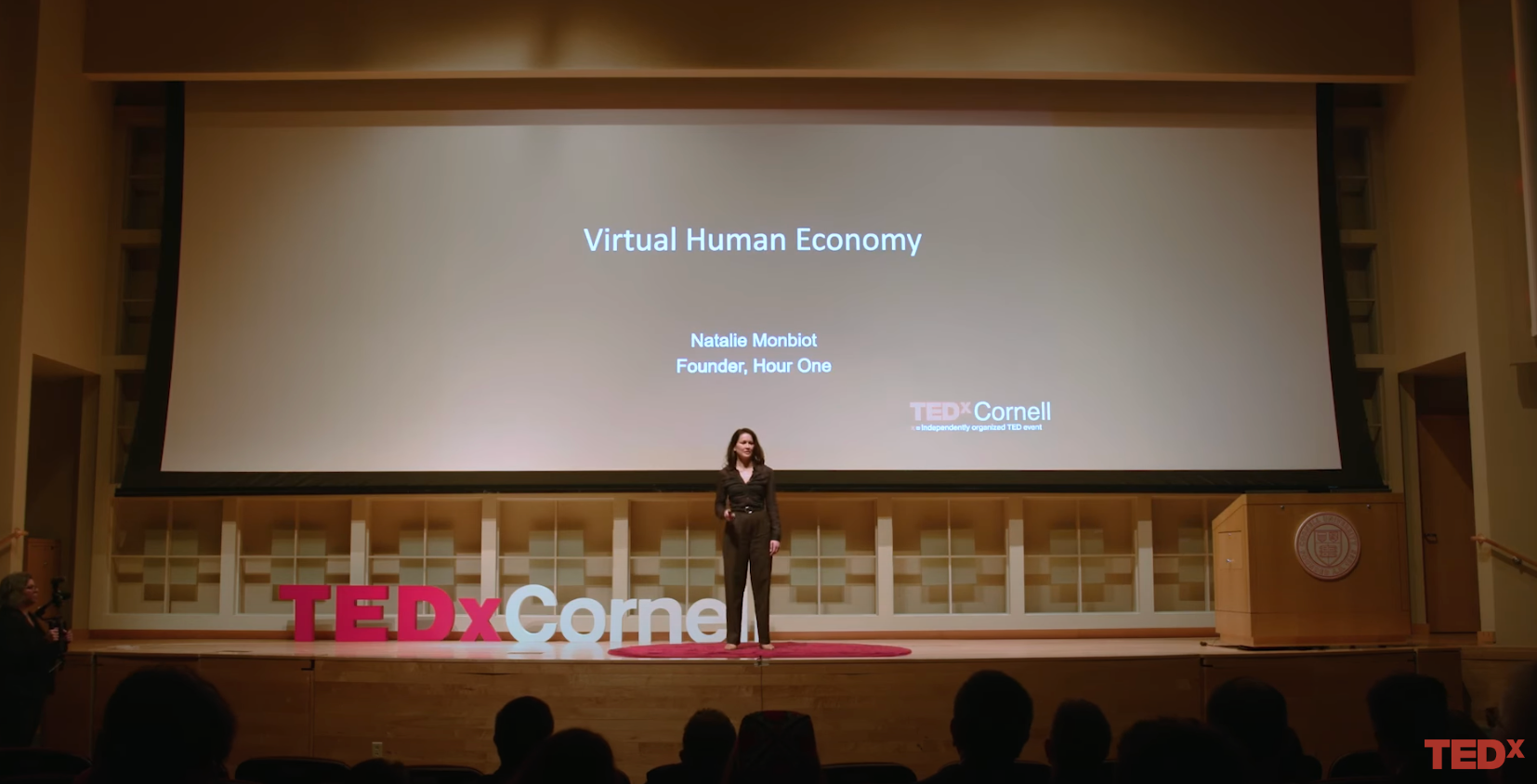At Hour One, we’ve been at the forefront of a technological revolution—the Virtual Human Economy. Long before AI avatars became a mainstream topic, we were one of the first companies to recognize the immense potential of virtual humans and their role in shaping the future. Our vision, since 2019, was simple but bold: to turn AI avatars into a functional, scalable business that unlocks new dimensions of human productivity and creativity.
In my recent TEDx talk, I shared the story of Emma, a talented architecture student and dancer whose AI avatar has opened doors she never imagined possible. Emma’s journey is a perfect example of how AI technology can extend human capability—enabling people to be in multiple places at once, generate new income streams, and even pursue their passions more fully. At the core of this evolution is the Virtual Human Economy—a concept we’ve not only helped to pioneer but also actively built from the ground up.
As one of the earliest companies to create commercially viable AI avatars, we’ve laid the groundwork for this new economy. Our team has worked tirelessly to ensure that our technology is built on strong ethical foundations, emphasizing transparency, consent, and accountability. We believe that virtual humans should enhance real lives—not replace them—and our success has proven that AI avatars can create opportunities rather than threats.
From scaling businesses to helping individuals turn their virtual selves into profit-generating entities, we’ve pushed the boundaries of what’s possible with AI. Our work is not just about technological advancement; it’s about ensuring that these advancements empower people to realize their true potential.
As we continue to lead the way in this space, we remain committed to shaping a future where AI avatars enhance human life in meaningful, responsible ways. Our journey has only just begun, but the Virtual Human Economy is already reshaping industries—and the possibilities are endless.








